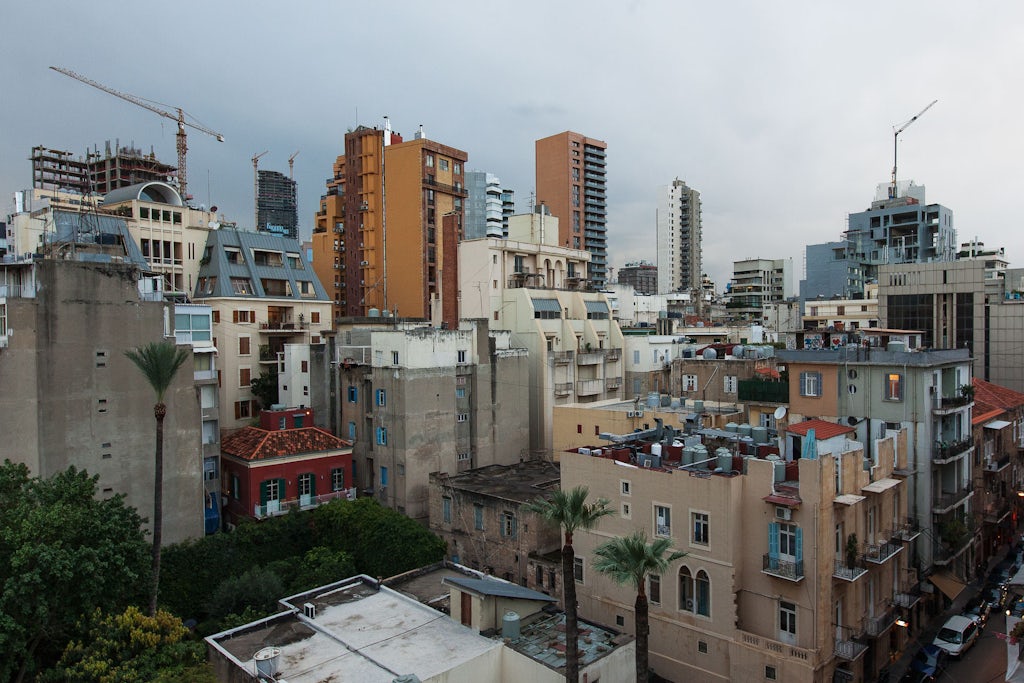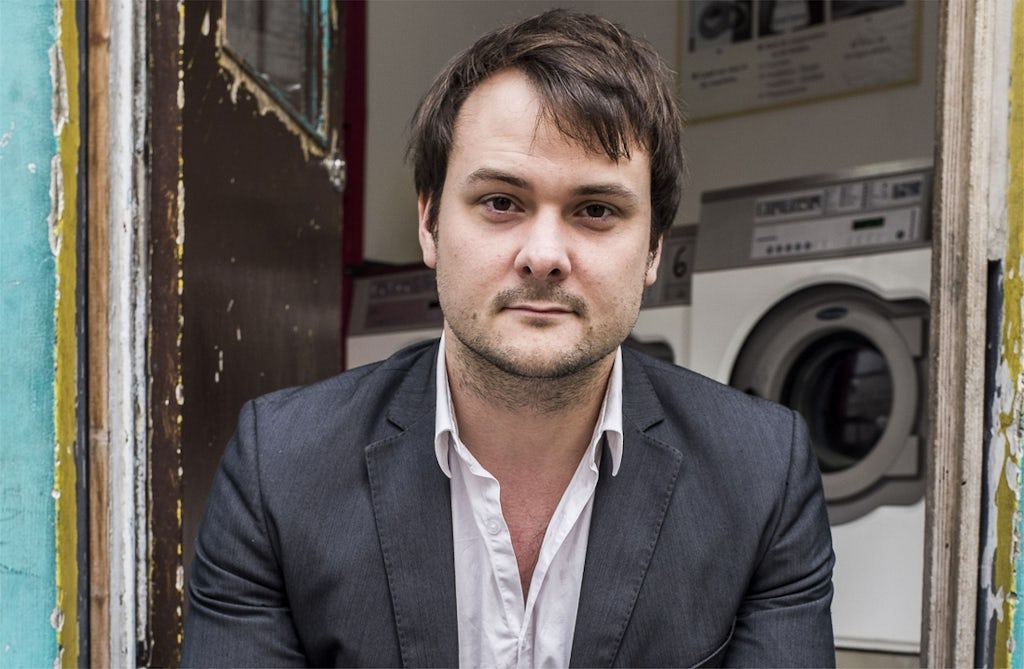
Beirut Intersections #4. Impressions of the 2016 IETM meeting

(c) Benoît Chattaway
On tangles and connections
Damn, there was a lot. As soon as I stepped on the plane for Beirut with a lively Belgian delegation of almost 20 people, I was overwhelmed. This was in part due to my job. I am a writer and playwright, and so on a regular work day I hold a pencil for eight hours and move within the contours of an A4, often within an even smaller surface, when I use a yellowy American legal pad or simply read a book.

Therefore, taking part in a networking event, since that was the point of the whole trip to Beirut, demanded quite some cognitive adaptation. So yes, it was in part just me, but it was also due to the fact that when I travel I sleep badly and drink a lot and bother too many people with too much nonsense, but still, even leaving me aside, damn, there was a lot.
The programme of the IETM Meeting in Beirut – put simply, a gathering for about 150 people from Europe and the Middle East who all had the words ‘art’ or ‘theatre’ at least a couple of times on their CV – well, that programme was chock-full. It bulged. It flowed over. A hefty monograph would be necessary to tell you what was said during this get-together and what it was about.
Despite the fragmentation bomb of subjects and conversations, networking was the main leitmotif, something like the chord progression in jazz, where the improvisation starts and finishes. I even know now how to say the word in Arabic: ‘shabaka’, if you really want to know.
Nevertheless, here is an attempt at a summary: we ate vine leaves, drank beer that costs 5 dollars per bottle, talked about censorship in Lebanon – yes, it still exists there –, we had to process 20 project proposals by 60 artists, memorised names that we forgot within the hour, fell in love with women who did not return the next day, discussed art in the public space, art in politics, art among and for people that do not need art much, art in war zones, art in environments where art cannot or may not exist, art in neo-liberal Europe, art in the unstable Middle East, and of course, let’s not forget the main theme of the event, the art of ‘networking’.
The latter can be seen as the red thread of the entire event. Despite the fragmentation bomb of subjects and conversations, networking was the main leitmotif, something like the chord progression in jazz, where the improvisation starts and finishes. I even know now how to say the word in Arabic: shabaka, if you really want to know.
For instance, I met a Syrian artist who had decided to make theatre in Egypt, Syria and Lebanon, almost relying on the same cluster strategy as a terrorist network: as soon as one cell is dismantled, other parts of the organisation take over. Now and then, the entire art world in the Arabic world seemed to be looking for a similar survival model. If you are unable to make ends meet due to an absolute lack of government support, you seek points of convergence with organisations that help you survive.
There were also many discussions on the exchange between Europe and the Middle East, an exchange that for many artists in Lebanon and the surrounding countries has become a way of life almost. Without the European festival circuit, famous artists such as Rabih Mroué would have a far smaller audience. And a lot of local artists seemed to have understood that too. Almost everyone I met had done an internship or a residence in France, Germany or America, or else was preparing for one. The cultural capital of Syria in a time of war is no longer Damascus, but Berlin.
Although artists in this environment are often proud of the fact that they do not care a straw for the sectarian dividing lines, it plays a big role in their lives. The division of their society still appeared to be a subject of many projects and forthcoming performances. In the arts scene of Beirut, the civil war of 1975–1990 is far from over.
Other forms of connection that played a role were those between art and the street, the rest of society, the public space. I heard wonderful stories about initiatives in this genre from Morocco, Egypt and Tunisia. The Lebanese group Zoukak, of which I saw a performance in Baalbek, about a week after the meeting ended, was a genuine revelation. The group regularly puts on performances with non-professional actors from key layers of society, and although I was familiar with the work method, I took a real interest in their work.
Strangely enough, what did strike me among all those connections and networks was that among artists in Beirut itself there is no real sense of connection. Several artists told me that the arts scene in Lebanon is so small that everyone knows everyone, but at the same time, most don’t feel that they are pulling in the same direction. This is not surprising in itself, since like many neighbouring countries, Lebanon is particularly divided. It is a country in which for years already sectarian tensions have been mixed with hyper-capitalist individualism. The country is one of the world’s best examples of the Roman policy of divide et impera. Each religious community or sect has its own neighbourhood and television channel. For a couple of years already I have been in touch with a restaurant-owner in the eastern Maronite area who has not been to West Beirut in more than 40 years, even though it is just a few hundred metres down the road. In this sectarian patchwork, powerful businessmen seize power and become solid, uncompromising potentates for whom the line between politics and money is virtually non-existent. Politics is in fact no more than doing business by other means, and the sectarian tensions function there like a handy smoke screen.
Although artists in this environment are often proud of the fact that they do not care a straw for these sectarian dividing lines, it plays a big role in their lives too. The division of their society still appeared to be a subject of many projects and forthcoming performances. In the arts scene of Beirut, the civil war of 1975–1990 is far from over.
The mechanisms that divide Lebanese society are the same as those that divide ours. In Europe too the connecting areas in our societies are increasingly being hollowed out by well-paid power-mad individuals that confuse politics and money, and on the other by sectarian tensions and war-related migration.
But although Lebanese artists thematise that division and at the same time push it away from themselves, I had the feeling that it continued to exist in a more subtle way. The feeling of belonging together that is missing in the country as a whole is nowhere to be seen in the arts scene either. Not to talk about the situation among, for instance, Syrian and Iraqi refugees, who, because of their diaspora, are so fragmented. Many local artists repeatedly lamented that lack of cohesion, the absence of a common platform.
On occasion, it makes the eagerness with which connections are sought with, say, Europe appear somewhat opportunistic, regardless of how legitimate that kind of opportunism is for an artist. Don’t get me wrong: as a maker you simply go where you can get something made; enough great minds in history have shown that staying on your cramped bit of land generally does not help you go forward. Yet, for that reason the whole IETM Meeting was a bit like a theatre fair, a market where young, beautiful actresses drank cocktails with programme directors from London and Paris.
I found that one of the most interesting contributions to the whole conversation about the chances of international networks in that light was the presentation by Joris Janssens, who compared various forms of networking, in Europe namely. On the one hand he talked about the way in which Flemish theatre-makers came together in the notorious 1980s in order to put their foot down collectively and thereby to demand an arts policy, a policy that despite the demolition policy of recent years is still one of the most progressive in the world. That network was highly effective at the time. Examples of similar contemporary platforms were certainly represented during the IETM Meeting: I am thinking in particular of a delegate of Die Koalition der Freien Szene in Berlin.
On the other hand, Janssens argues that a very different type of network is being set up in Europe today. In this second case, it is about strategies that emerge in an arts climate in which ever fewer means are available to make productions. To counter this evolution, more and more producers are seeking one another out and, often across borders, partnerships are forged and budgets are put together. The traditional theatre in which productions are made within a single platform is becoming a travelling nomadic institution without money, but with a dense web of contacts.
The type of network which many artists from the Middle East were looking for was often of the second sort. Quite understandable when you know that the political circumstances in which these people work are often not stable enough to create more permanent production platforms. In the light of that absence, people go in search of survival strategies, possible combinations of venues and funds. They try to scrape together chances that are not sustainable in themselves, but become valuable once combined.
Strangely enough, the entire meeting was organised in such a way that there were often opportunities for a passive form of networking, but not a more active, more collective form of connection. The reasons for this were the rather busy programme, the rather passive form in which the debates took place – imagine a stuffy, brightly lit hall filled with people with headphones listening to the crackling English of an interpreter –, and lastly also the large group of candidates, whereby contacts, because of that abundance, were soon fleeting. This IETM Meeting was a wonderful opportunity to draw lines, to exchange mobile phone numbers, to engage, in the sidelines of the sometimes rather docile debates, in fiercer discussions, even to dream of partnerships. Yet the lack of genuine connection in that diffuse, disparate group of people sometimes appeared to be illustrative of the lack of that connection on a larger scale.
The mechanisms that divide Lebanese society are the same as those that divide ours. In Europe too the connecting areas in our societies are increasingly being hollowed out by well-paid power-mad individuals that confuse politics and money, and on the other by sectarian tensions and war-related migration. Like the artists in the Middle East, we can oppose this situation by becoming nodes of sorts in tangles that cannot be destroyed by these mechanisms. But in doing so we must not lose sight of genuine connection. Networks are resilient, but the art of our future needs more connection than that.
About the author
Michaël Bijnens is a Brussels- and Amsterdam-based writer with a background in theatre and film.
By means of an open call, Kunstenpunt/Flanders Arts Institute invited arts professionals to apply for participation in the Satellite Meeting IETM 2016. From the submitted applications, five participants were selected, among whom writer Michael Bijnens. They wrote down their impressions in a travel report.





